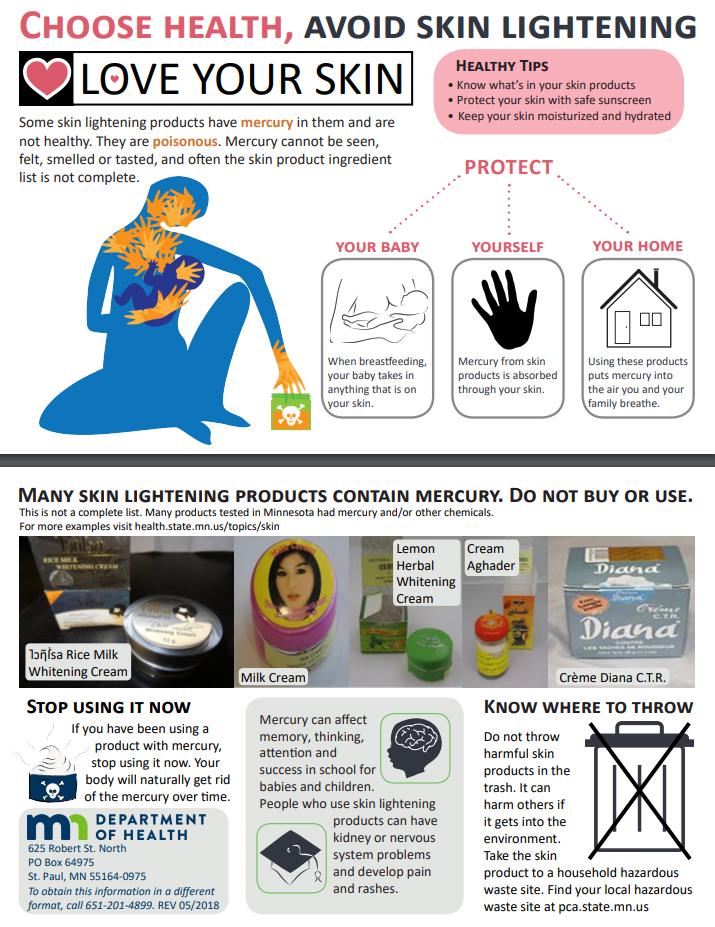Biomonitoring
- Biomonitoring Home
- About Biomonitoring
- Biomonitoring Projects
- Biomonitoring Reports
- Advisory Panel
- Biomonitoring and Tracking Legislation
Related Sites
Environmental Health Division
Contact Info
Minnesota Family Environmental Exposure Tracking (MN FEET)
Find more results and information in the Community Report:
MN FEET Community Report (PDF), English
MN FEET Community Report (PDF), Somali
MN FEET Community Report (PDF), Spanish
MN FEET Community Report (PDF), Hmong
About the study
Mercury, lead, and cadmium can be harmful to babies’ health. The MN FEET study tested Minnesota women and their babies for these chemicals. The goal is to help families and communities protect themselves and their babies from these unsafe chemicals.

Asian, East African, Latina, and White pregnant women participated. MN FEET staff interviewed 779 women with the help of researchers at HealthPartners Institute and SoLaHmo/West Side Community Health Services. The study collected and analyzed urine and cord blood samples from nearly 400 moms and their babies with the help of staff at Regions and Abbott Northwestern Hospitals.
Some groups exposed to more mercury
While lead and cadmium levels were found to be low, some groups of women had high levels of mercury in their bodies:
- Women who used skin lightening products had more mercury in their urine, and
- Women who frequently ate certain types of fish (Walleye, Northern Pike, Bass, White Bass, or King Fish) had more mercury in their babies’ cord blood.
- Asian women in the study, and especially Hmong women, had the highest levels of mercury in both their urine and their babies’ cord blood.
- Some Hmong women in Minnesota may have high mercury exposures from using skin lightening products and eating fish higher in mercury.
Use of skin lightening products may also be putting Latina and East African women at risk:
- East African women had the second-highest levels of mercury in their urine, but we need to involve more women from this community to get a better understanding of the exposure.
- Some Latina women in the study had high mercury levels in their urine. At least one woman with high mercury had been using skin lightening products.
- When we visited the homes of women who had been using skin lightening products, we found that these products were also putting mercury into the air that the whole family was breathing.
You can protect yourself
There are many ways to have less contact with these harmful chemicals, like avoiding use of skin lightening products and choosing fish that are low in mercury. Below are links to guidelines for reducing exposure:
Fish consumption guidelines
Learn about what kinds of fish you should eat and how much.
Choose Your Fish - guidelines, recipes, and more.
Choose Your Fish (PDF) - Recommendations for children and pregnant women.
Put fish on your plate - includes translated materials and videos.
Avoid skin lightening products
Recent tests in Minnesota show that some skin lightening products have dangerous levels of mercury.
Handout: Choose health, avoid skin lightening products (PDF)
Also available in: Somali (PDF) | Spanish (PDF) | Hmong (PDF) | Karen (PDF) | Oromo (PDF)
Related links
MN Physician: Amazing Happens Here
